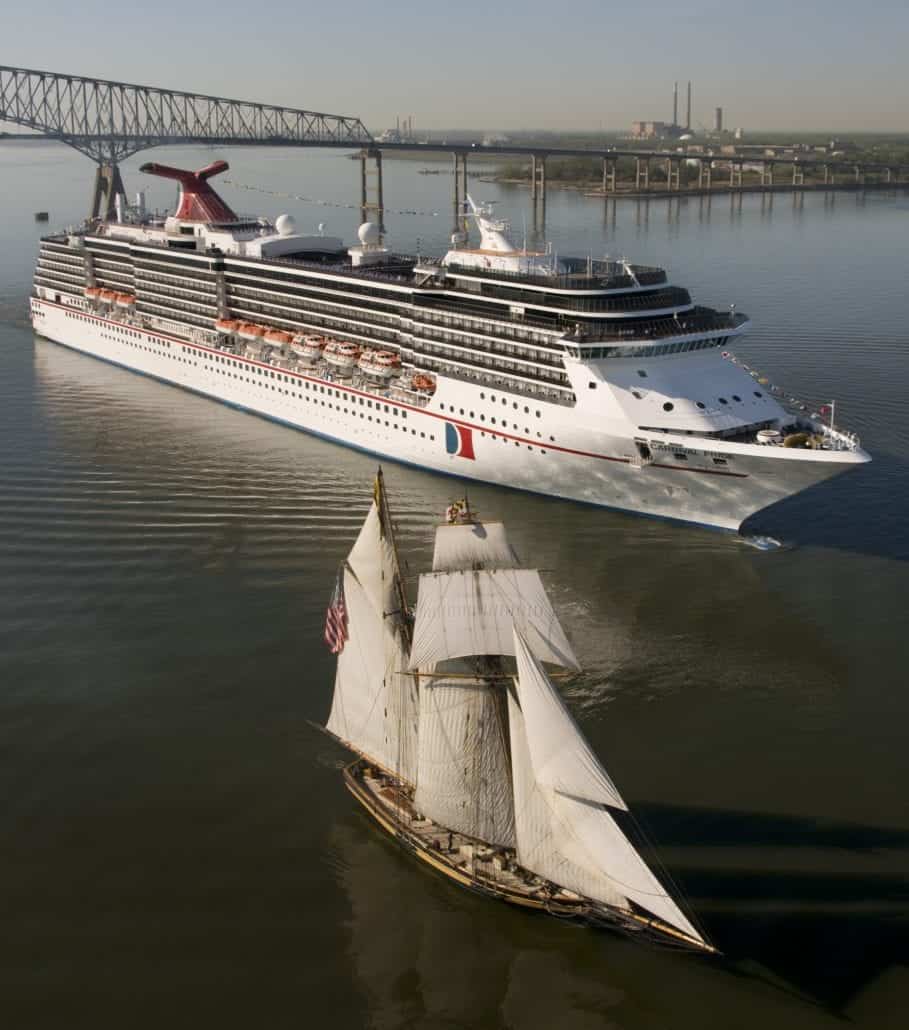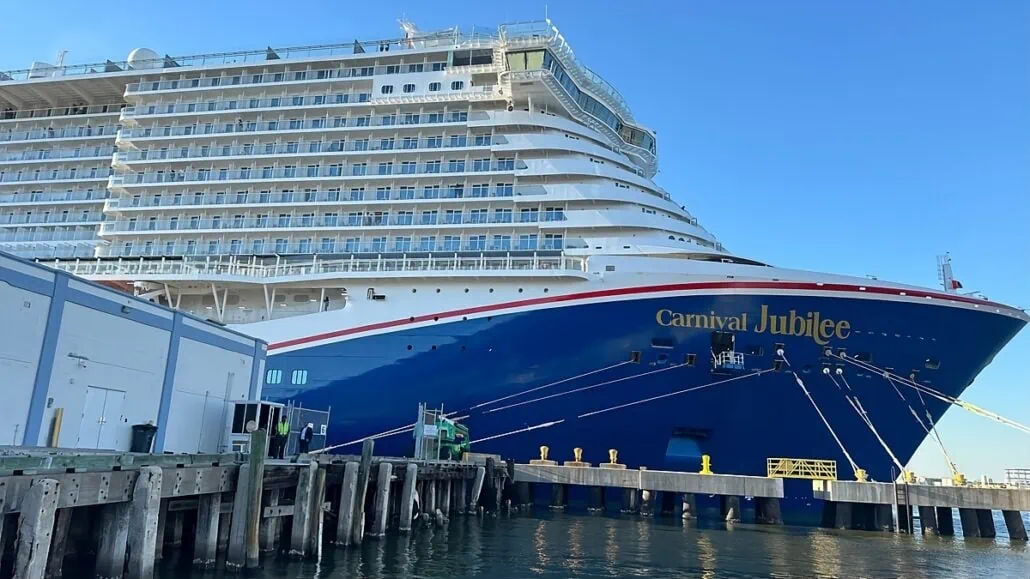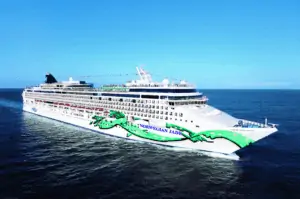Admit it. When you saw photos and videos from the horrific accident in which a ship collided with Baltimore’s Francis Scott Key bridge, you assumed the seafaring vessel was a cruise ship.

No, not because you love cruising and have it on the brain 24/7 — although that might be true — but because it seemed a likely scenario. Maybe, on some level, we’re sort of expecting it.
How Big Is Too Big?

Royal Caribbean has come out with yet another ship ready to claim the “Largest In the World” title every year or two. When their latest, Icon of the Seas, was introduced, it got a lot of publicity. Not all of it was good.
Many, especially non-cruisers, had a bit of a brain meltdown upon seeing pics of the gargantuan vessel. Psychologists did interviews about why it triggered something within us. But at the end of the day, it boiled down to one fact: The ship is so big as to make us nervous.
We can’t help but think, “What if something goes wrong?”
So, on some level, we might have thought it was inevitable when we saw the bridge collapse in Baltimore. While this time around, it wasn’t a cruise ship, that doesn’t mean it won’t be next time.
In recent months, we’ve seen ships blown off their moorings. One ship had a steam-related “incident” that left two crew members dead, while another experienced one of our most terrifying fears, a fire at sea.
And it was only 12 short years ago that the Costa Concordia disaster claimed the lives of 33 people after running aground and partially sinking.
Size Matters… In More Ways Than One

To be clear, smaller ships can host catastrophic events just as easily as larger vessels. And to be even clearer, the odds of something catastrophic happening are relatively low. But to deny the possibility exists is to live—or at least vacation—in a fool’s paradise.
Another issue facing the cruise industry is that megaships carry a lot of passengers, and not every port they’d like to visit necessarily wants to welcome all those guests. It seems that every few months, another port deals with complaints from locals about overtourism.
On the one hand, the money brought to these communities by cruise passengers is vital to the economy. On the other hand, many in those areas believe that they are paying too high a metaphorical price in terms of the impact on their infrastructures and, on a more micro level, their way of life.

We are huge fans of all things cruising. We love big, small, and midsize ships and want nothing but the best for the industry.
That said, it might be time for the industry to closely examine itself and its path forward. How big is too big? For that matter, how many ships are too many?
In the months after the industry rebounded from the pandemic-caused shutdown, every executive from every cruise line spoke about the “pent-up demand for travel.”
It helped drive a desire to build new ships at a fevered pace, as many already sailing did so at 100 percent capacity or more.

But what happens when that pent-up desire has been sated? Or, God forbid, when an unexpected disaster strikes fear into the heart of would-be passengers, driving capacity down as they seek other ways to spend their vacation dollars?
Cruising isn’t going anywhere (thank God). But maybe, just maybe, it would behoove lines to follow in the footsteps of the automobile industry, which at a certain point said, “Hey, maybe not all of our vehicles need to be Cadillacs and Hummers. After all, something must be said for fitting into a smaller parking space.”
Or, in the case of cruise ships, port.







![First Time Cruise to Europe + Cruise News [Podcast]](jpg/1681310099-msc-world-europa-maiden-call-genoa-italy-1-300x206.jpg)
